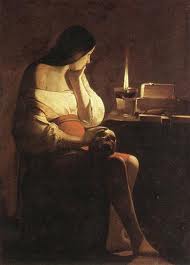Morning After Thoughts on Jesus and his “wife”
by James Tabor on jamestabor.com
The news is out. If you missed it you must have been hiding under the proverbial rock yesterday afternoon and evening. It is headlines–front page news–even in our own local Charlotte Observer this morning which reprints the NYTimes wire story with the title: “Papyrus Refers to Jesus’ Wife.”

My blog post yesterday, and those of many of my fellow “bibliobloggers” were picked up by major media, including the Washington Post and MSNBC’s Alan Boyle–all worth reading to get a handle on this story.
So what is the significance of this newly released texts–assuming its authenticity?[1]
It certainly does not “prove” that Jesus was married–to Mary Magdalene or anyone else. What it does offer us is the first textual reference to Jesus addressing a wife–not just a follower, companion, or an intimate follower, as we have in the Gospel of MaryMagdelene, the Gospel of Philip, and other related materials, usually categorized as “gnostic.”
In approaching the question of whether Jesus may have been married one must take things step by step, with this new text actually coming at the end not the beginning of any historical investigation. The question itself also runs parallel to the question of the role and significance of Mary Magdalene in his life and within the early community of Jesus followers. In my view there are two primary questions that need first to be asked:
1. Is it likely that the “historical” Mary Magdalene had a more significant role than indicated in our New Testament gospels, both in terms of her intimacy with Jesus and/or her leadership among the disciples? She appears suddenly, “out of the blue,” as we say, in Mark, our earliest Gospel, at Jesus’ crucifixion scene, and seems to be intimately involved in his familial burial rites–including washing Jesus’ naked corpse along with his mother and sister. In John she is even “first witness” to Jesus’ resurrection, see my post here on that point. She then disappears, never to be mentioned again, even in Acts which purports to relate a narrative of the Jesus movement following his death. My own take on that question I have covered extensively in a four-part extended series of blog posts titled “There’s Something About Mary– Magdalene,” beginning here.[2]. The knee-jerk reaction that Jesus could not have been married because if he had been it would be mentioned in our New Testament gospels or in Paul can actually be quite easily turned on its head–as I show in this blog series. But even more operative in the minds of millions is the “scandal” of the very thought of a fully human–i.e., a sexual Jesus, when in fact how could we as historians present him any other way? The celibacy idea, in my view at least, turns out to be a house of cards–both in the Dead Sea Scrolls and in the gospels–and Paul who did advocate celibacy, turns out, ironically, to be the best witness to Jesus being married! I invite those who have not read these posts to take a look.
2. Are the later 2nd and 3rd century texts which I survey in this series, which have been extensively treated by scholars like Karen King, Jane Schaberg, Ann Brock Graham, April DeConick, and many others, reflecting anything that might shed light on any consideration of the “historical” Mary Magdalene–that is Mary as she was in her own time? In those later texts she is clearly in a leadership role, a kind of “apostle to the apostles,” not only as the “first witness” to Jesus resurrection but one whose intimacy with Jesus causes the other apostles to be jealous of her. This latest text adds to this body of evidence but advances things considerably by the unequivocal use of the word “wife.”
Taking these two clusters of “Mary Magdalene” traditions together, one earlier and the other later, does any kind of consistent pattern emerge? In my blog series I argue that it does, and that it deserves consideration by those who have dismissed the important role of Mary in the later material based on the sparsity of the earlier materials.
Only after we have worked through these questions and issues are we ready to consider the question on which the public seems most focused–thanks to Michael Baigent and Dan Brown–that is, was Jesus married at all–and if so, is Mary Magdalene the most likely candidate?
I am further convinced that the evidence found in the two Talpiot tombs, as covered in our recent book, The Jesus Discovery, supplements the textual material and deserves consideration as well.
1. I think the authenticity case is strong, see Karen King’s forthcoming paper in Harvard Theological Review which carefully lays out the case pro and con, linked here.
2. There is an even more extensive treatment in our recent book, The Jesus Discovery

